| << Chapter < Page | Chapter >> Page > |

You should now calculate or have already calculated statistical information which you will insert into a Word table. We will be using the statistical information present in the SPSS output depicted below.

In the Word document,

Once clicked, a row and column of empty boxes will appear. By simply moving your mouse over the boxes, the amount of rows and colums will appear in orange.
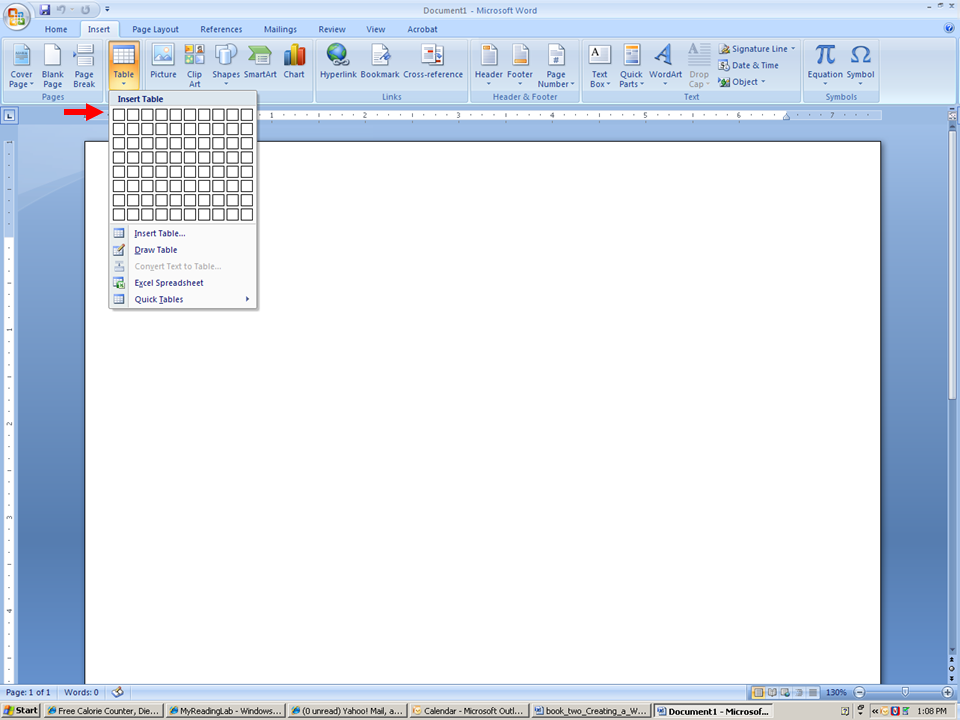
For instance, a 4×2 table would resemble the following:

Once you determine the number of columns and rows, you can make your table larger by dragging the bottom part of your graph to fit the screen.

You can also change the design of your table and color :

√ Using the arrow to the right of the tables, choose the color and style you desire

For example, if you choose the table in turquoise, your table will be displayed as follows:

You can also insert a table using the “Insert Table" tab:

The default setting for a Word table is 5 columns and 2 rows. For our purposes, given the statistical information in the SPSS output depicted previously, we will need a column for the variable name; one for the sample size ( n ); one for the Mean ( M ); and one for the Standard Deviation ( SD ). Thus, we will need four columns, not the five shown below. We have statistical information on three variables in the SPSS output table. In addition to these three rows, we will need a row in which to name our variables. Therefore, we will need four rows.

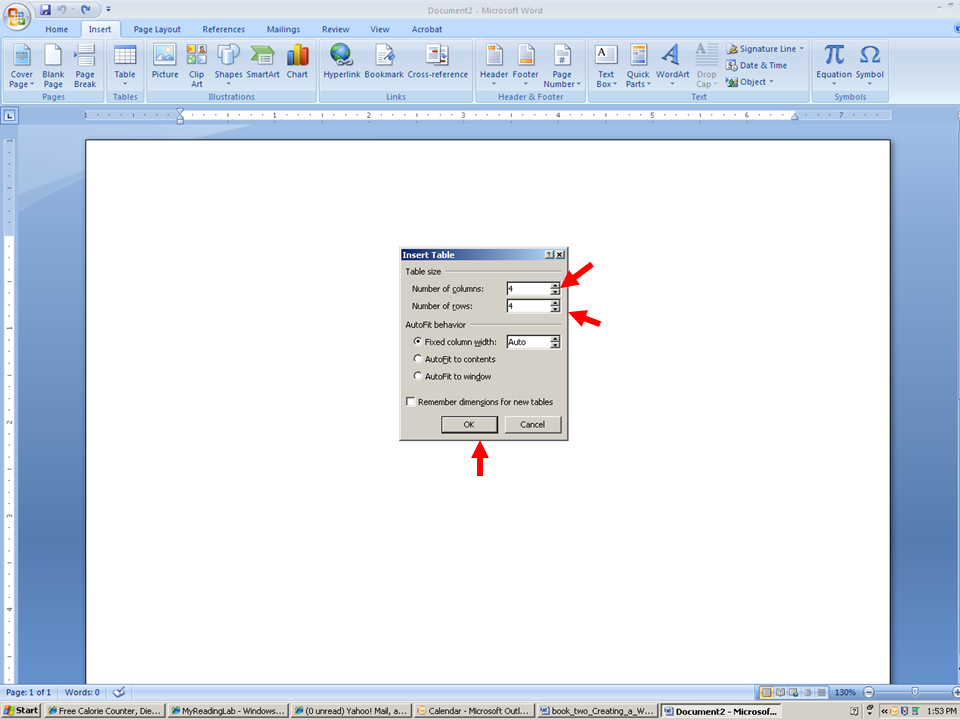
Word will then generate a table for you with 4 columns and 4 rows. The top row will be used to label the columns.
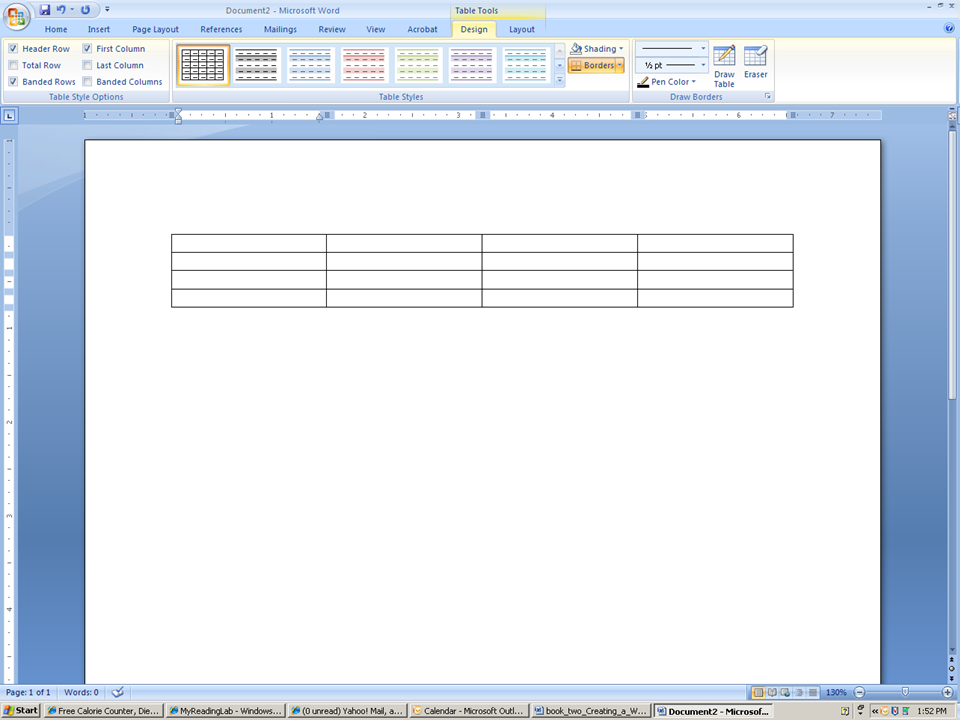
From the SPSS output, our three variables are TAKS Test Grade 12 All Students Tests Rate; TAKS Test Grade 11 All Students Tests Rate; and TAKS Test Grade 10 All Students Tests Rate. Thus Grade levels of 12, 11, and 10 will be out variable names.

The Word table will look as follows once that information has been typed into the table.
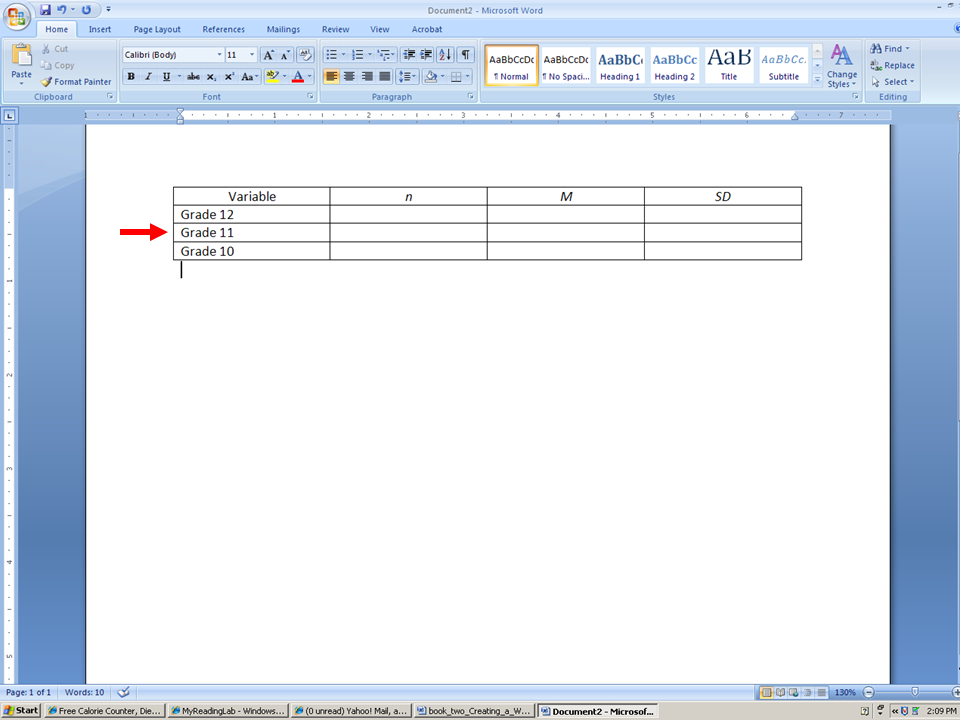
In this example, we will label the far left column as Variable; the second column will be for the sample size ( n ); the third column for the M ; and the fourth column for the SD . Notice that the labels of Variable, n , M , and SD are centered. Also note that APA requires that mathematical symbols should be placed in italics.

Now we will type into the Word table the variable names specified before: Grade 12, Grade 11, and Grade 10. These variable names should be left margin justified within the first column.

Next we type into the n , M , and SD cells in the Word table the statistical information from the SPSS output screen.
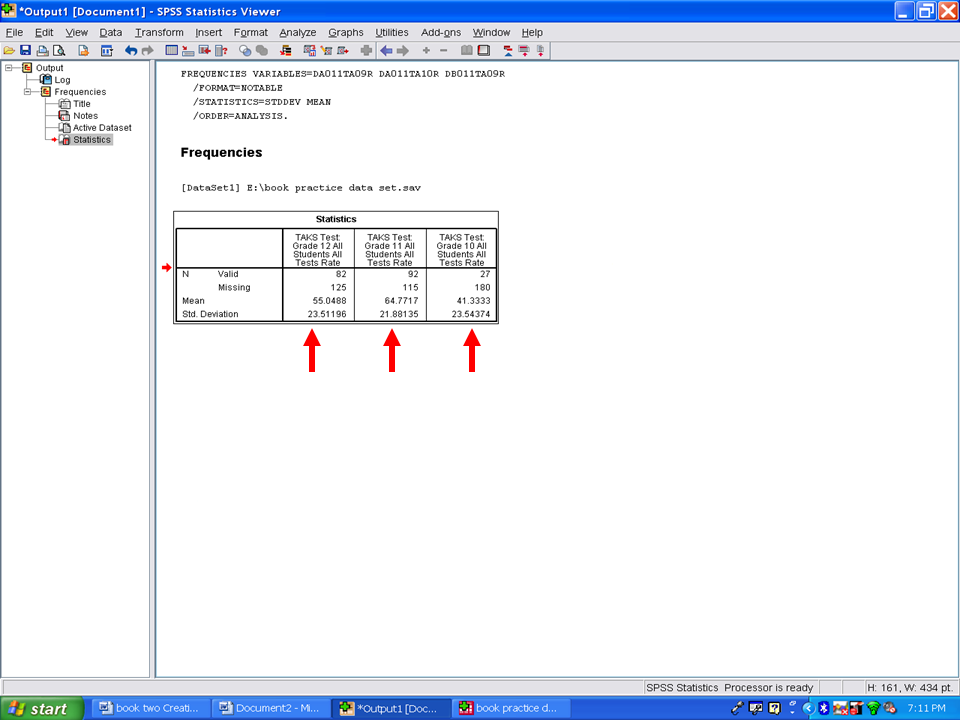
After typing this information into the Word table, the table will look as follows: Note that decimal places are carried to only two places, as per APA 6th edition requirements. The statistical information is also centered under each column heading. The next item to take care of is the lines at the top and bottom of the table, as well as under the top row.
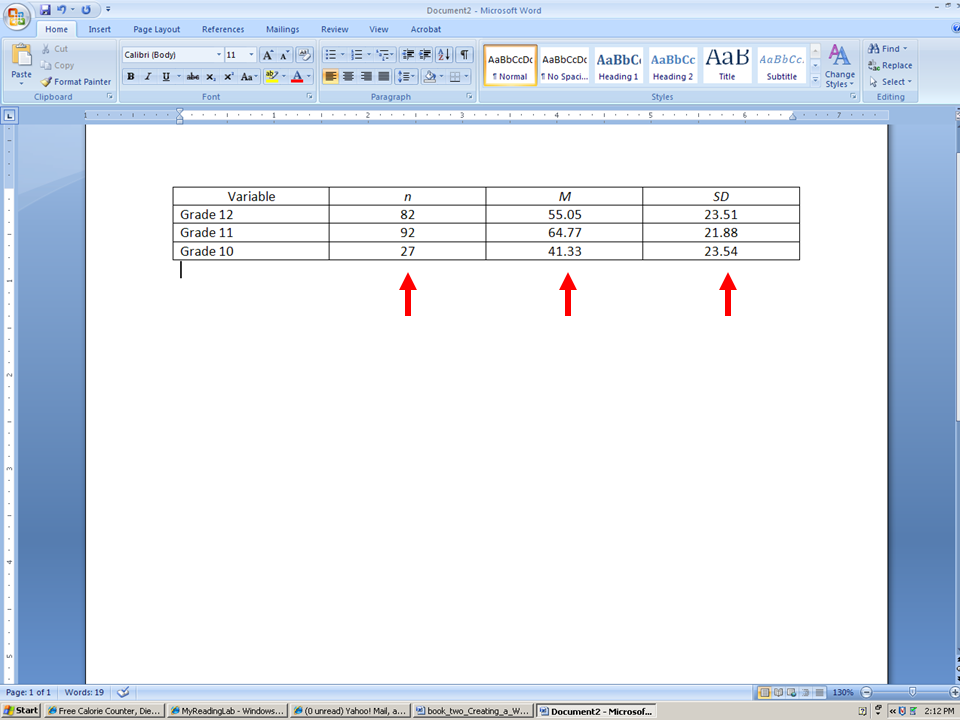


After clicking on Borders and Shadings, the screen below will appear. We will change the Width from its current ½ pt to 1 pt. To do so, click on the down arrow and change it to 1 pt.

Your screen will now look like the screen below. We will next click on the top line of the table and on the bottom line of the table to change them to 1 pt. They are currently set at ½ pt because it is the default value. Clicking on the line one time will remove it. Clicking on it again will make it appear as a 1 pt. value.

After changing the top and bottom lines, click on the other lines one time. Clicking one time should remove each line. When your table looks like the one below, click on OK.

Your table will now look like this. You now have a 1 pt. line at the top and at the bottom of your table. We now need to place a line under the top row, the one that begins with variable. To do this, we will highlight the first row.

Your screen should now look like the one below. To have Word place a line under the top row:

Your screen should look like:


After clicking on borders and shading, this screen will appear. Click on the bottom part of the table so that a line appears.

Your table will then look like the following.


Your Word table has now been created correctly as per APA 6th edition guidelines. It will look like the following: You should have three lines in the table: one at the top; one at the bottom; and one at the bottom of the top row. Now the next step is to type in Table 1 (if the first table or appropriate table # if not)
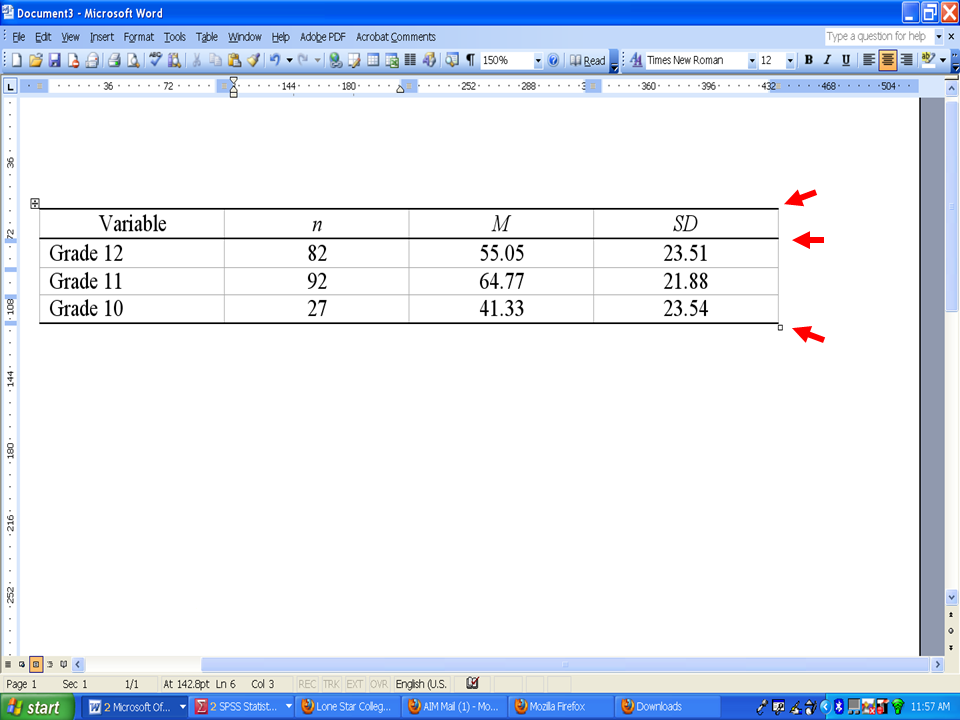
For this example, we will type in Table 1. and then a table title that accurately reflects the information contained within the table. Notice that the table title is in italics. A period is present after Table 1. but not after the table title itself. Though APA does permit tables to be single-spaced, we encourage the use of double-spacing, unless told to do otherwise.

You have now generated a Word table, properly formatted in APA 6th edition, that contains descriptive information from SPSS output.

Notification Switch
Would you like to follow the 'Making microsoft word user-friendly for dissertations, theses, and manuscripts: part ii' conversation and receive update notifications?